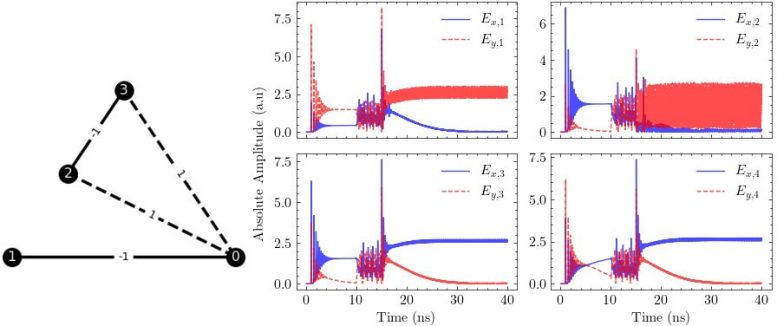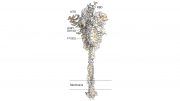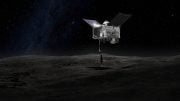
Collective state computing, leveraging the Ising problem and light-based techniques, offers a novel approach to overcome traditional computing limitations. Credit: SciTechDaily.com
Researchers develop a computer from an array of VCSELs with optical feedback.
In our data-driven era, solving complex problems efficiently is crucial. However, traditional computers often struggle with this task when dealing with a large number of interacting variables, leading to inefficiencies such as the von Neumann bottleneck. A new type of collective state computing has emerged to address this issue by mapping these optimization problems onto something called the Ising problem in magnetism.
Understanding the Ising Problem
Here’s how it works: Imagine representing a problem as a graph, where nodes are connected by edges. Each node has two states, either +1 or -1, representing the potential solutions. The goal is to find the configuration that minimizes the system’s total energy, based on a concept called a Hamiltonian.

In an Ising computer (illustrated here with 4 bits), the variables all evolve towards a solution in parallel. Credit: The Authors doi: 10.1117/1.JOM.4.1.014501
Leveraging Light-Based Techniques
To solve the Ising Hamiltonian efficiently, researchers are exploring physical systems that could outperform traditional computers. One promising approach involves using light-based techniques, where information is encoded into properties like polarization state, phase, or amplitude. By leveraging effects like interference and optical feedback, these systems can quickly find the correct solution.
In a study published in the Journal of Optical Microsystems, researchers from the National University of Singapore and the Agency for Science, Technology, and Research looked at using a system of vertical cavity surface-emitting lasers (VCSELs) to solve Ising problems. In this setup, information is encoded in the linear polarization states of the VCSELs, with each state corresponding to a potential solution. The lasers are connected to each other, and the interactions between them encode the problem’s structure.
Challenges and Future Directions
The researchers tested their system on modest 2-, 3-, and 4-bit Ising problems and found promising results. However, they also identified challenges, such as the need for minimal VCSEL lasing anisotropy, which may be difficult to achieve in practice. Nonetheless, overcoming these challenges could lead to an all-optical VCSEL-based computer architecture capable of solving problems that are currently out of reach for traditional computers.
Reference: “Linear polarization state encoding for Ising computing with optically injection-locked VCSELs” by Brandon Loke, Zifeng Yuan, Soon Thor Lim, Aaron Danner, 28 December 2023, Journal of Optical Microsystems.
DOI: 10.1117/1.JOM.4.1.014501









Be the first to comment on "Beyond Binary: The Light-Driven Computing Revolution"